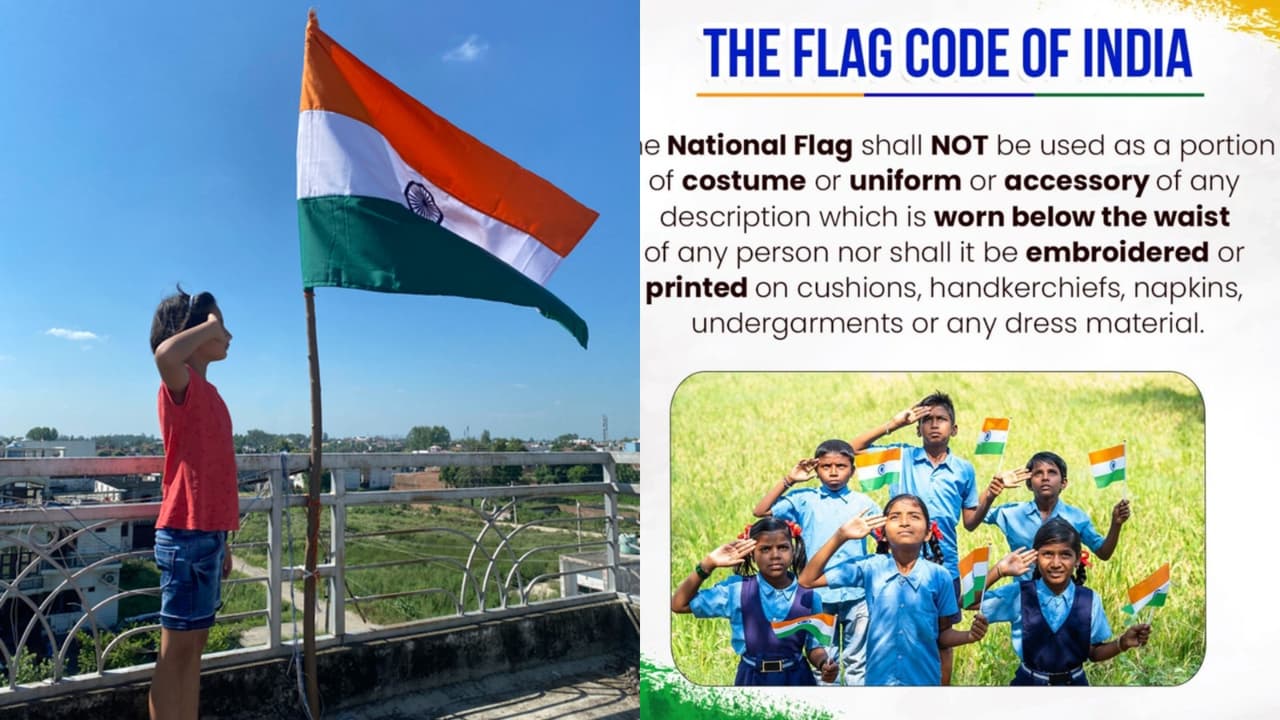The Government of India has reminded citizens to follow the Flag Code, which bans using the National Flag below the waist or on items like cushions, handkerchiefs or clothing, ensuring it is treated with full dignity.
How India Got Tiranga
National flag was designed by Pingali Venkayya and adopted by Constituent Assembly on July 22, 1947, symbolising unity, freedom and nations ideals.
The Indian National Flag or Tiranga, is a symbol of the nation’s pride and unity. To protect its dignity, the government has laid down clear guidelines under the Flag Code of India, 2002 and the Prevention of Insults to National Honour Act, 1971. These rules explain how the flag should be displayed, handled, and respected on the Independence Day. In a post on X, the government reminded citizens about the correct way to use the National Flag. As part of the Har Ghar Tiranga campaign, the Ministry of Information and Broadcasting has issued a clear message that the flag must always be treated with respect. Any misuse or inappropriate display of the tricolour is not allowed.
Meaning of Indian national flag
The three equal horizontal stripes on Tiranga i. e. saffron at the top stands for courage, sacrifice and the spirit of renunciation, white in the middle represents truth, peace and purity, and green at the bottom signifies faith, fertility and prosperity. At the centre is the Ashoka Chakra, a navy-blue wheel with 24 spokes, taken from the Lion Capital of Ashoka at Sarnath. It represents the eternal wheel of law, movement and progress. The Indian flag is more than cloth and colours. It represents the country’s freedom, unity and democratic values. It is a reminder of the sacrifices made by countless freedom fighters. The way it is displayed reflects our respect for the nation.
How to display the flag correctly
The tricolour is a symbol of the nation’s unity, pride and sacrifice. The Flag Code exists to make sure that it is displayed and handled in a way that reflects its importance. Any violation can lead to legal action under the Prevention of Insults to National Honour Act, 1971. The law also bans the use of the National Flag’s design on items such as cushions, handkerchiefs, napkins, undergarments or any dress material. It cannot be embroidered, printed, or otherwise displayed on these items, as such uses are seen as disrespectful. The government says that these guidelines are important to preserve the honour of the flag and what it represents.
- The flag should always be flown in a position of honour, higher than any other flag in the area.
- When hoisted, the saffron band must be on top.
- The flag must be in good condition, not damaged, soiled or crumpled.
- It can be displayed on homes, offices and vehicles as long as rules are followed.
Things you must never do with the flag
India’s Flag Code strictly says that the National Flag should never be used as part of a costume. This means no clothing items like trousers, skirts or belts should have the flag or its design. The rule applies to all people, in all situations, whether during national celebrations or private events. Citizens must keep in mind the following:
- Do not use the flag as clothing, bedding or drapery.
- Do not let the flag touch the ground, floor or water.
- Do not place the flag below any person’s waist level.
- Do not use the flag for decoration on cushions, handkerchiefs, or other items.
- Do not print the flag on disposable or temporary items like paper plates or napkins.
The rules are not about restricting people but about ensuring the Tiranga is always shown respect. Every time it is displayed correctly, it strengthens the bond of unity and reminds us of the shared duty to protect the nation’s honour.
Public awareness during Har Ghar Tiranga
The reminder comes ahead of Independence Day celebrations under the ‘Har Ghar Tiranga’ campaign, which encourages every household to display the national flag. Officials are urging citizens to follow the Flag Code so that the spirit of the campaign is not harmed by improper use. The government also appeals to schools, institutions and event organisers to educate people, especially children, about these rules.
Scroll to load tweet…
The Tiranga is more than just a national symbol. It represents the country’s unity, independence, and the sacrifices made by freedom fighters. Every time it is displayed, it serves as a reminder of India’s history, democratic values and shared responsibility to protect the nation’s honour. This is why the Flag Code and related laws make sure it is always treated with dignity and never used in ways that could show disrespect.
